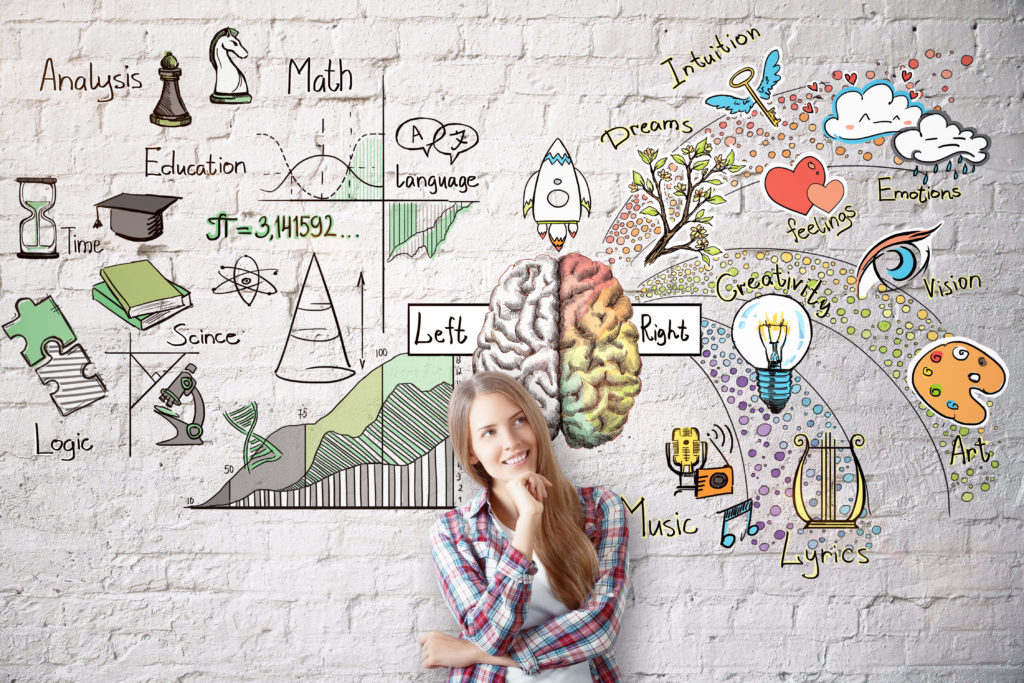
The mind has two main parts: the conscious and the subconscious mind.
The conscious mind is approx. 10% of our mind and it has four parts:
- rational
- analytical
- willpower
- temporary memory (limited)
The conscious mind is responsible for analysing, thinking, making plans and short-term memory.
Rationalising our actions keeps us sane. We need a structure, an order in our everyday life.
The analytical mind recognises problems and finds solutions to fix those problems using willpower and our short-term memory. As these are only temporary, real internal change cannot happen in the conscious mind.
The change comes from the subconscious mind, which takes up approx. 90% of our mind. The subconscious mind consists of:
- long-term memory
- emotions and feelings
- habit and behaviour patterns
- involuntary body functions
- creativity
- imagination
- developmental stages
- intuition
- beliefs
- the autonomic nervous system
This is the more powerful part of the mind. The long-term memory stores every piece of received data and associates them with emotions, feelings and beliefs. We are made out of our past. We think, see and do things based on our long-term memory and the associated feelings. Hypnotherapy has to use this part of the brain to achieve a real change in a client`s behaviour, habits, feelings or beliefs. Hypnotherapy connects the client to the problems and offers a solution, a change in the subconscious mind.
The autonomic nervous system that is responsible for our automatic processes, like breathing and eating, the beating of our hearts and the circulation of our blood, is found in the subconscious part of the brain. Our perception of the world plus our creativity and imagination are stored here and hypnosis uses these for the alteration process. Beliefs are stored here, therefore by reaching this part of the brain by hypnosis, we can alter the behaviour and achieve the desired outcome. If you believe in the change, your body will react too on a long-term basis.
Which part of the mind is in control and why?
The subconscious mind is in control because it processes most of the information about the environment. The conscious mind deals with the recently learnt information and it also analyses, thinks and plans. The conscious mind cannot handle all the information that could be gained in every moment of our life, it selects what to concentrate on. An example: While I am writing these lines, I do not concentrate on thousands of other things such as the birds singing outside or how the table feels under my elbows. Typically, our conscious mind can only handle around 7 chunks of information at the same time. We filter and delete the information that we do not need. This allows us to experience life in a way that makes sense and keeps us sane.
Brain wave activities
The human brain produces an electrical activity that can be measured in waves. We can measure brain frequencies in Hertz by using an EEG.
There are different brain waves in different states of consciousness.
Beta waves are in the conscious, waking state, measuring 14-30 Hertz. In this state, the conscious mind is dominant.
Alpha waves are in the daydreaming, creative, relaxed, alert but closed eye state, measuring 8-13 Hertz. In this state, the conscious mind is less dominant, and the subconscious mind is at the forefront. It is a light, hypnotic trance state. The conscious mind might not register the difference between imaginary and physical reality; therefore hypnotic suggestions should be made in this state.
Theta waves occur in the dreaming, hypnotic, meditative, subconscious, or alert hypnotic (e.g. sports activity) state, measuring 4-7 Hertz. Repetitive movements and sounds can take you to theta, where the subconscious mind is dominant. Past experiences and emotions can be examined in this state; this is the state for regression and hypno-anaesthesia.
Delta waves occur in the unconscious state, when we are asleep, measuring 0.5-6 Hertz.
The brain can be functioning on more than one wave simultaneously, but hypnosis cannot happen on Beta or Delta waves.
